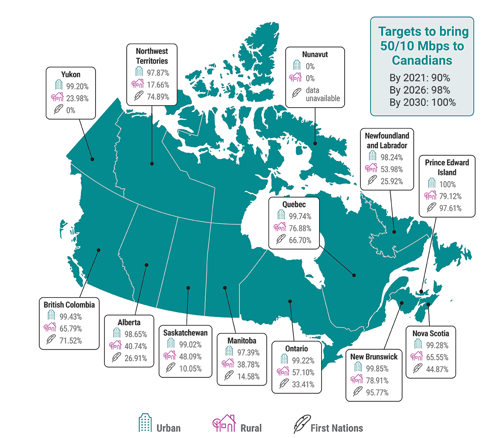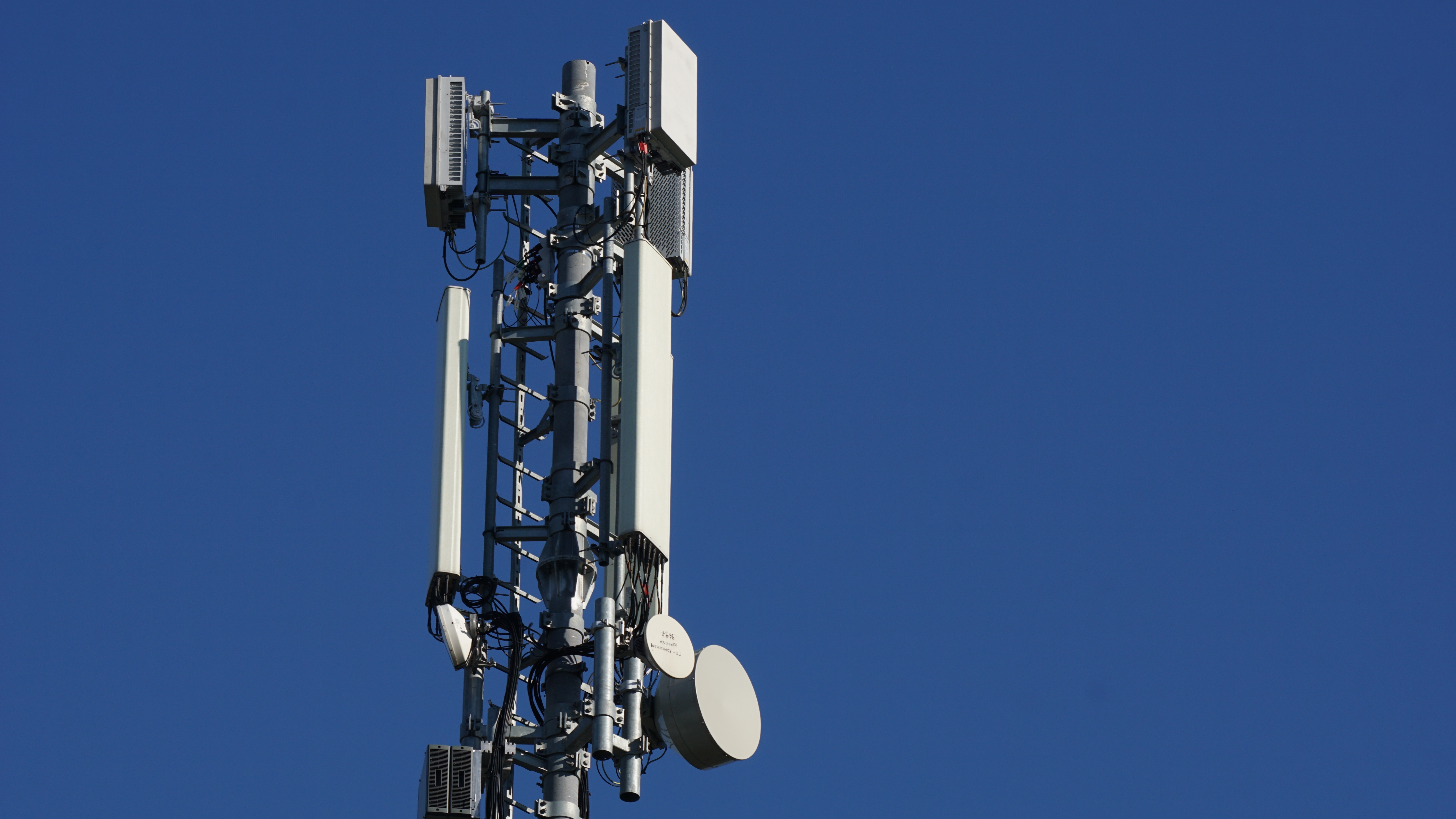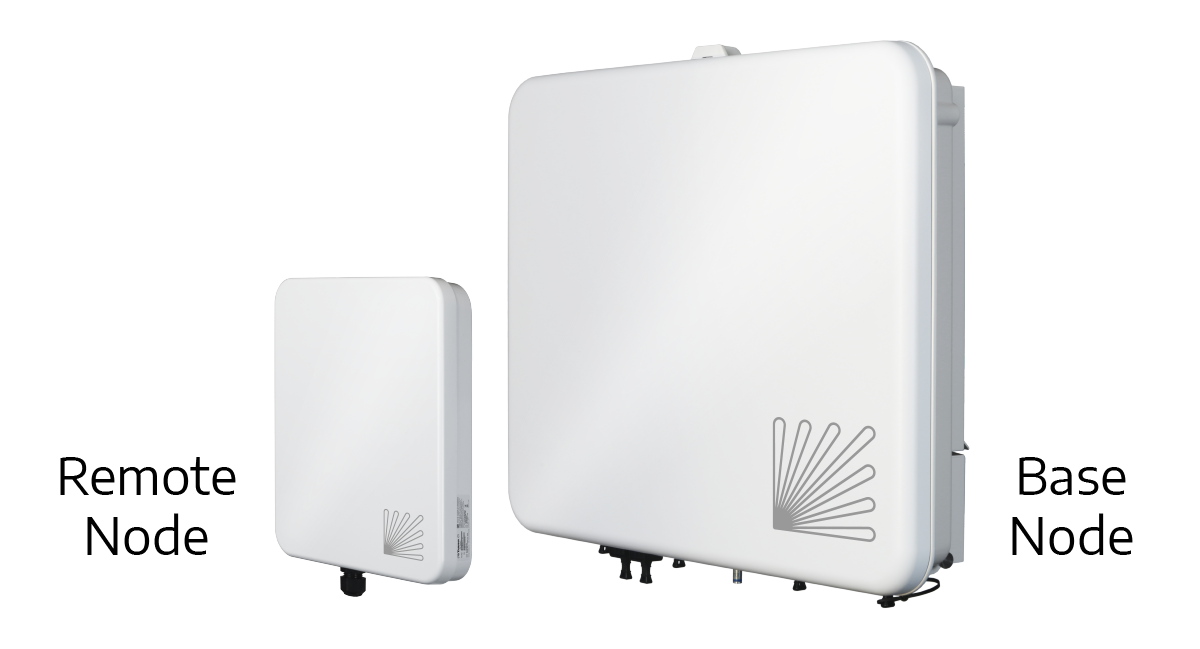Digital Connectivity in Rural and Remote Areas
In today’s digital world, a high-speed internet connection is essential for accessing educational and work opportunities, participating in the economy, and obtaining healthcare and government services. However, a recent report from the Office of the Auditor General of Canada found that as of 2021, only 42.9% of First Nations households and 59.5% of rural households had high-speed internet - and those percentages drop even lower in more remote provinces with difficult terrain, like Manitoba, Saskatchewan, and Yukon. This post discusses the challenges involved in expanding digital connectivity in rural and remote areas before describing the technological solutions that can help bridge the digital divide.


Why Is Rural and Remote Connectivity So Challenging?
In 2019, Innovation, Science, and Economic Development Canada (ISED) introduced High-Speed Access for All: Canada’s Connectivity Strategy, which outlined two main goals:
- Ensuring all Canadians have access to high-speed internet access at speeds of at least 50 Megabits per second (Mbps) download / 10 Mbps upload, and
- Making mobile wireless coverage available in all homes and businesses and along major roads.
Several technological and logistical roadblocks, however, have prevented the government from realizing its ambitious goals.
Fiber is usually the preferred technology for delivering broadband internet access because it’s fast and reliable. However, deploying new fiber infrastructure is both expensive and time-consuming, especially in rural and remote areas. Fiber cable runs underground, and digging the required trenches in rugged terrain (mountains, canyons, rivers, and lakes) can be extremely difficult.
In addition, providers must run fiber lines to every single access site, which can take a long time in rural areas where buildings can be separated by kilometers rather than meters. To reach all the businesses and households in these regions, fiber cable must traverse railroad tracks, public lands, and sacred sites, which requires extensive right-of-way permitting.
To meet Canada’s ambitious connectivity goals for rural and First Nations communities, service providers must find a way to reduce the time, expense, and logistical challenges involved in deploying fiber internet infrastructure.
Bridging the Digital Divide With Fixed Wireless Access
Fixed wireless access, or FWA, uses unlicensed or lightly licensed technology (in 3.65GHz, 5GHz and 6GHz bands) to provide broadband internet access wirelessly, without fiber cables. It uses access points attached to poles, radio towers, or buildings to deliver broadband access to subscriber units installed in homes and businesses.
FWA usually doesn’t require trenching or permitting because providers can install radios on existing structures, reducing the time, expense, and logistical hassles of deploying broadband. In addition, as soon as the provider activates the access point, it immediately connects all subscriber units for miles around, eliminating the need to run fiber to every site and significantly accelerating broadband deployments.
Traditional fixed wireless technology suffers from some limitations, however, that prevent it from fully addressing connectivity challenges in rural and remote regions of Canada. In certain frequencies, FWA access points require line-of-sight (LOS) to communicate with subscriber units, so obstacles like trees, mountains, buttes, and buildings could reduce performance and reliability. FWA also operates on the unlicensed spectrum, making it prone to interference. In certain topologies, it’s difficult to achieve the 50 Mbps up / 10 Mbps down speeds required by the ISED.

| Fiber Broadband vs. Fixed Wireless Access | |
|---|---|
| Fiber | Provides fast and reliable internet access, but deployment is expensive and time-consuming, delaying broadband accessibility goals. |
| Fixed Wireless Access (FWA) | Accelerates deployments by providing internet access without running fiber cables but may experience LOS limitations, interference, and speeds lower than fiber optic cable. |

How Tarana Improves Digital Connectivity in Rural and Remote Areas
Tarana Wireless helps broadband providers bridge the digital divide with G1, the world’s first next-generation fixed wireless access (ngFWA) platform. G1’s base nodes (BNs) and remote nodes (RNs) ensure superior performance even in non-line-of-site environments by applying signal processing across time, frequency, and spatial domains to provide a perfect channel, no matter the conditions.
G1 also uses asynchronous burst interference cancellation (ABIC) and distributed massive MIMO to eliminate signal interference, delivering fast and reliable internet access to remote and underserved communities. Plus, managing Tarana’s wireless broadband network architecture is easy with the Tarana Cloud Suite (TCS) software, which enables zero-touch provisioning, software-defined network (SDN) management, and automation.
As a trusted Tarana Wireless distributor, MBSI WAV is here to connect you with the ngFWA solutions you need to deliver fiber-class wireless internet access to subscribers in remote areas and challenging deployment environments. We have the largest, most consistent stocking position in the wireless networking market, and our world-class support team will assist you every step of the way, from product evaluation to deployment and beyond. Plus, we’re an authorized Tarana training partner, offering several options for technical training and accreditation to help you get started on your ngFWA journey.
Contact the fixed wireless access experts at MBSI WAV to learn more about using Tarana solutions to deliver improved digital connectivity in rural and remote areas.
Learn more about Next Generation Fixed Wireless Access (ngFWA)




